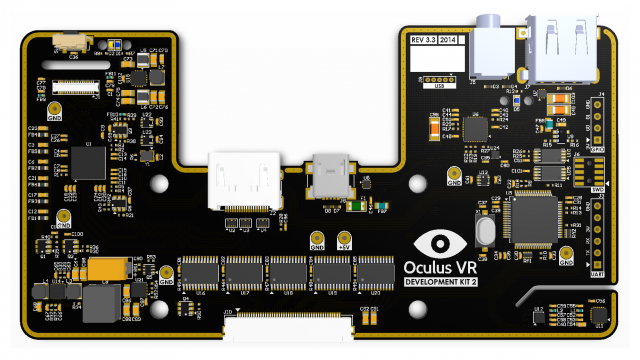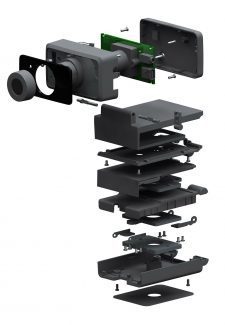Following the open-sourcing of the Rift DK1 plans back in 2014, Oculus today released the recipe for the Rift DK2, the company’s second development kit headset released in 2014. Under an open-source license, anyone can now freely download the blueprints of the company’s second VR headset and even manufacture their own.
On the company’s developer blog today, Oculus open-sourced the Rift DK2 plans under a Creative Commons Attribution 4.0 license which permits the following:
You are free to:
Share — copy and redistribute the material in any medium or format
Adapt — remix, transform, and build upon the material
for any purpose, even commercially.Under the following terms:
Attribution — You must give appropriate credit, provide a link to the license, and indicate if changes were made. You may do so in any reasonable manner, but not in any way that suggests the licensor endorses you or your use.
No additional restrictions — You may not apply legal terms or technological measures that legally restrict others from doing anything the license permits.
The company published the files on GitHub.
The Rift DK2 was the first Oculus headset to incorporate positional tracking thanks to an IR LED array hidden under the headset’s shell, and a companion camera which would detect it to calculate movements. The headset also used a fast OLED panel which enabled the use of low-persistence (a display technique that reduces image blur during head movement) which has become a staple of VR headsets today.

Because timing is important for calculating accurate tracking, the flashing of the IR LED array needed to be synced with the camera. Oculus’ Nirav Patel writes that a careful view of the open-sourced Rift DK2 files reveals the company was working on a wireless sync system via an IR receiver, but ended up sticking with a tethered solution.
Interestingly, Patel says that the DK2’s cable was one of the most complex aspects of the headset:
The headset cable in Cable/Electrical and Cable/Mechanical is actually one of the most complex parts of the product. Electrically it needed to handle high speed signals over long distances without EMI issues. Mechanically it needed to be removable, have Y-splits on both ends, and be robust to repeated use. It also needed to feel flexible. The design work on the cable is probably one of the most directly valuable areas of knowledge we carried on to the Rift.

The company also notes that some of the parts specified in the design are “challenging or impossible to source today, so it may not be possible for an individual to build a full headset from the provided files,” however the hope is that the knowledge contained within the plans will provided a strong foundation for future works.
Patel credits the following with building the Rift DK2:
- Headset Electrical: Lyle Bainbridge, Ryan Brown, Matt DeVoe
- Sensor Electrical: John Robertson
- Headset Firmware: Nirav Patel
- Mechanical: Julian Hammerstein, Matt Thomas, Kam Chin
- Optical: Youngshik Yoon
- Automation: Simon Hallam, Anusha Balan, Brant Lewis
- Operations: Rita Chen, Licia Angino, Jack McCauley, David Dykes
- Factory: Allen Qin, Victor Zhang, Ivan Chow, Mark Zhang
- Misc: Palmer Luckey, Chris Dycus, Jonathan Shine
- Artwork: Matt Ford, Jon Malkemus
As well as Matt Appleby, Kelly Lowenberg, and John Tsai for preparing the open-source files.
Some 119,000 Rift DK2 units were sold across 137 countries. According to the September 2017 Steam Hardware & Software Survey, the Rift DK2 still makes up 3% of the headsets in use on the platform.







